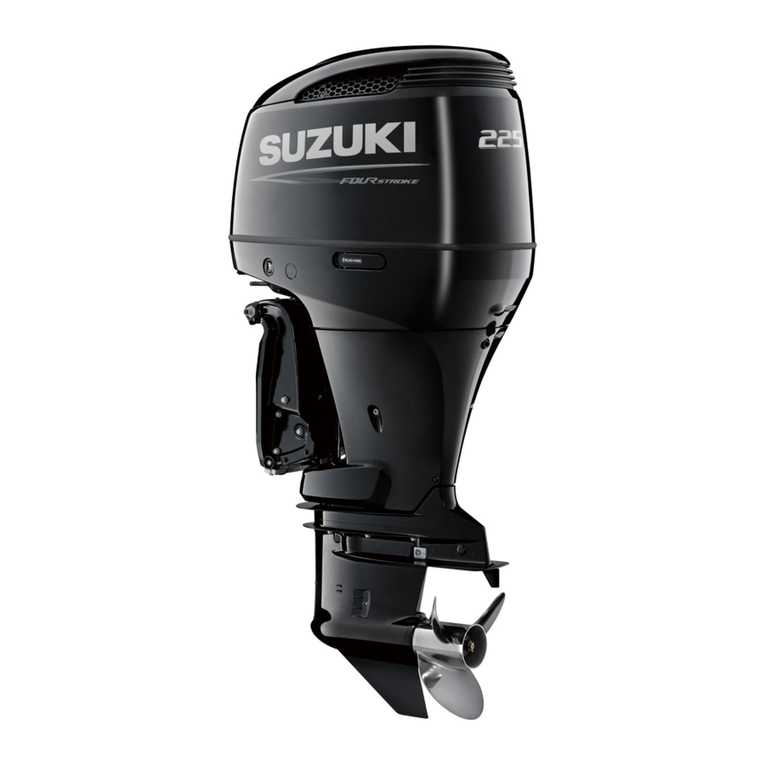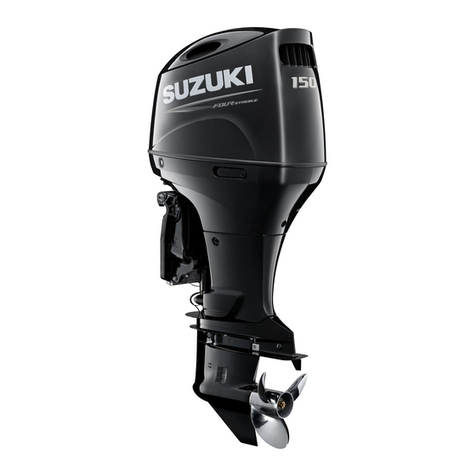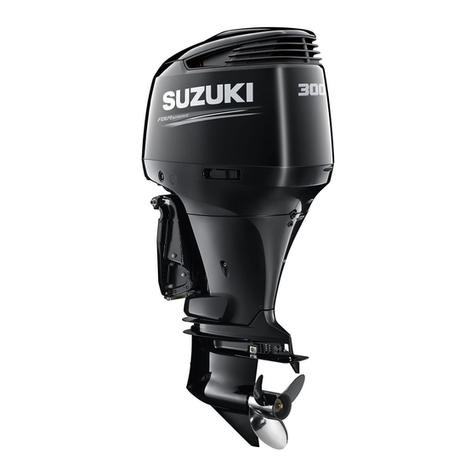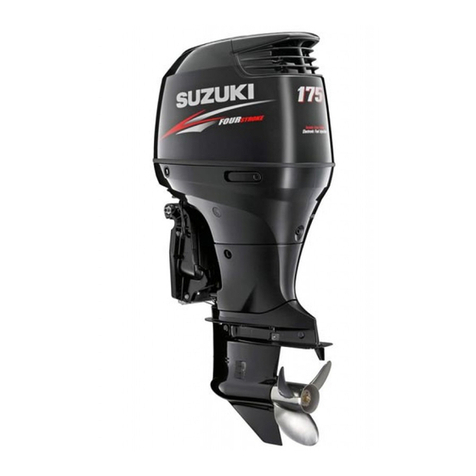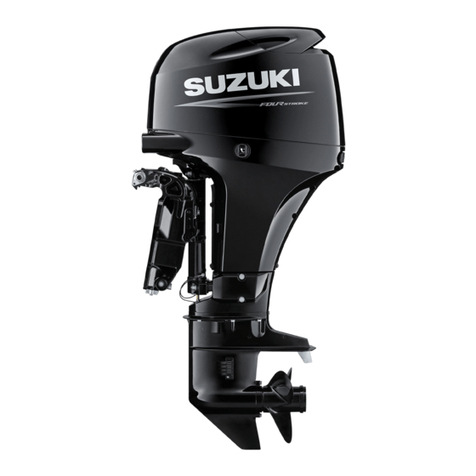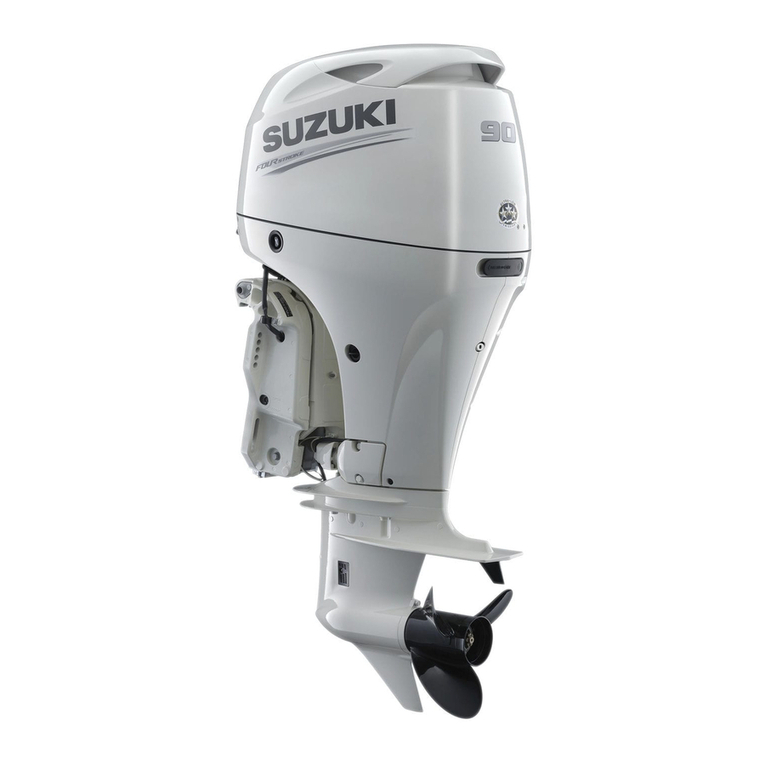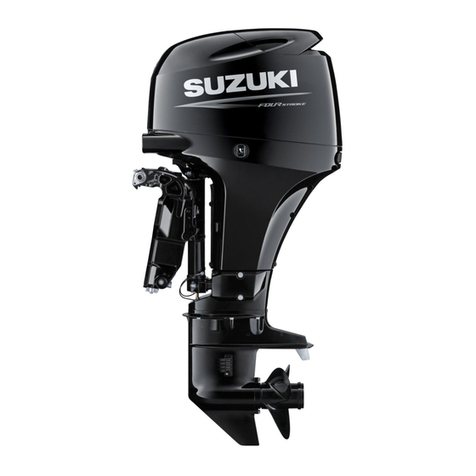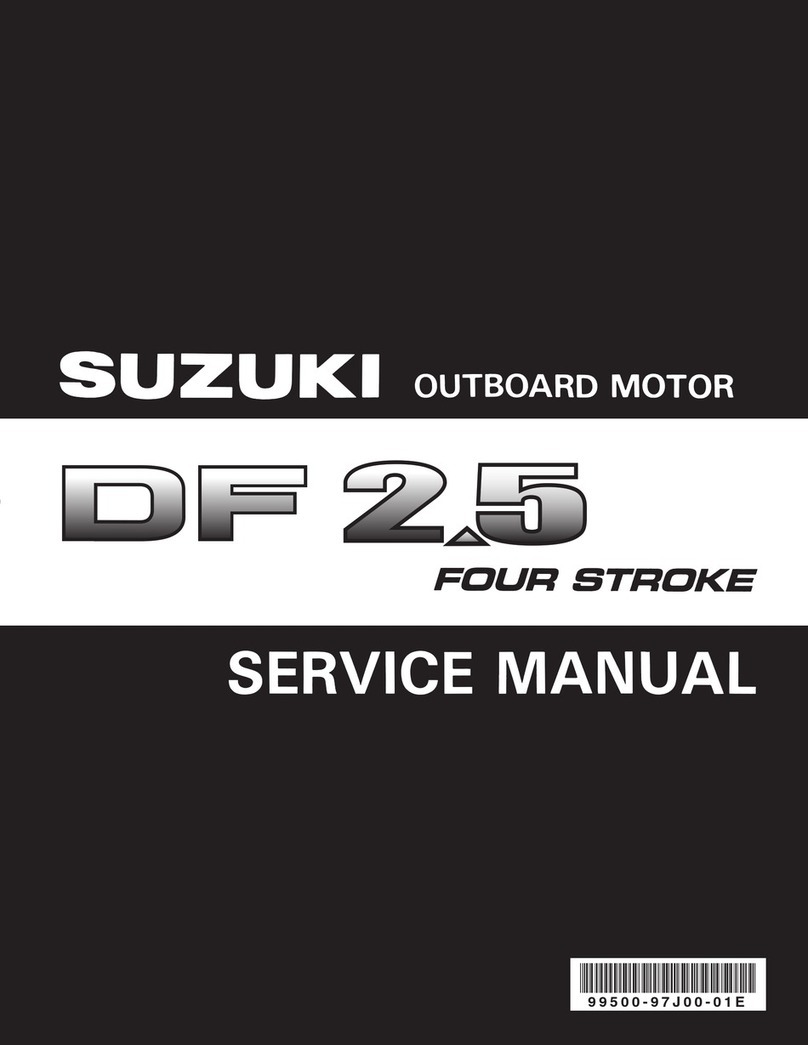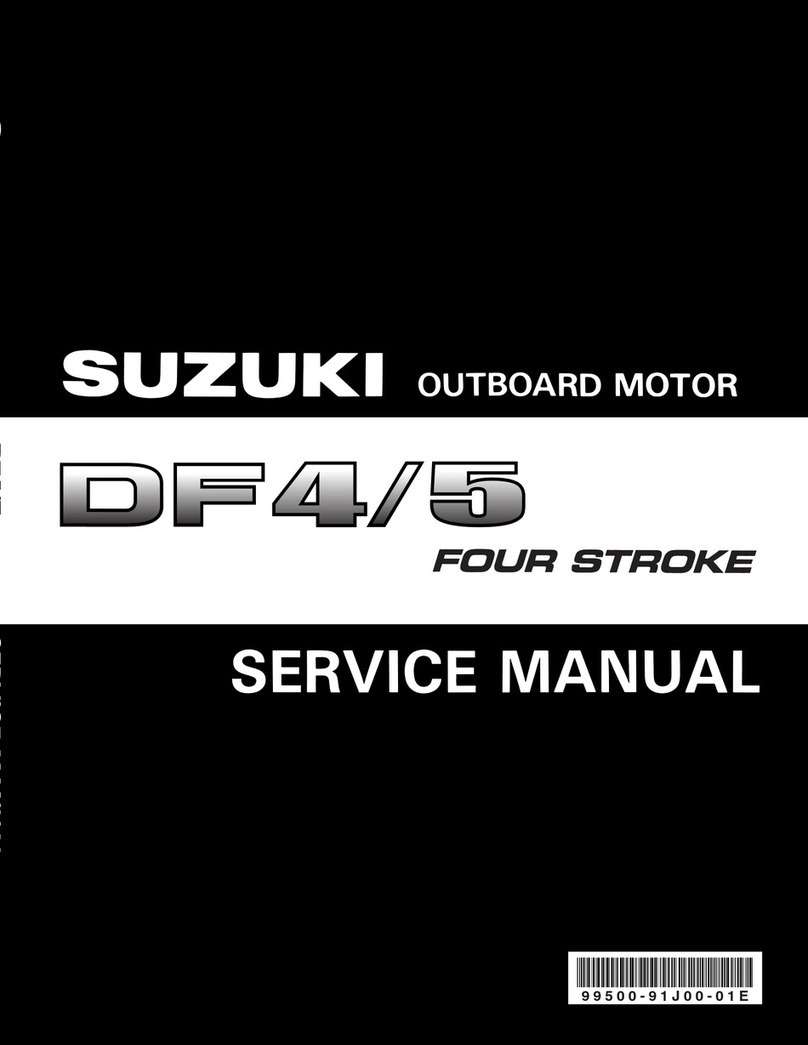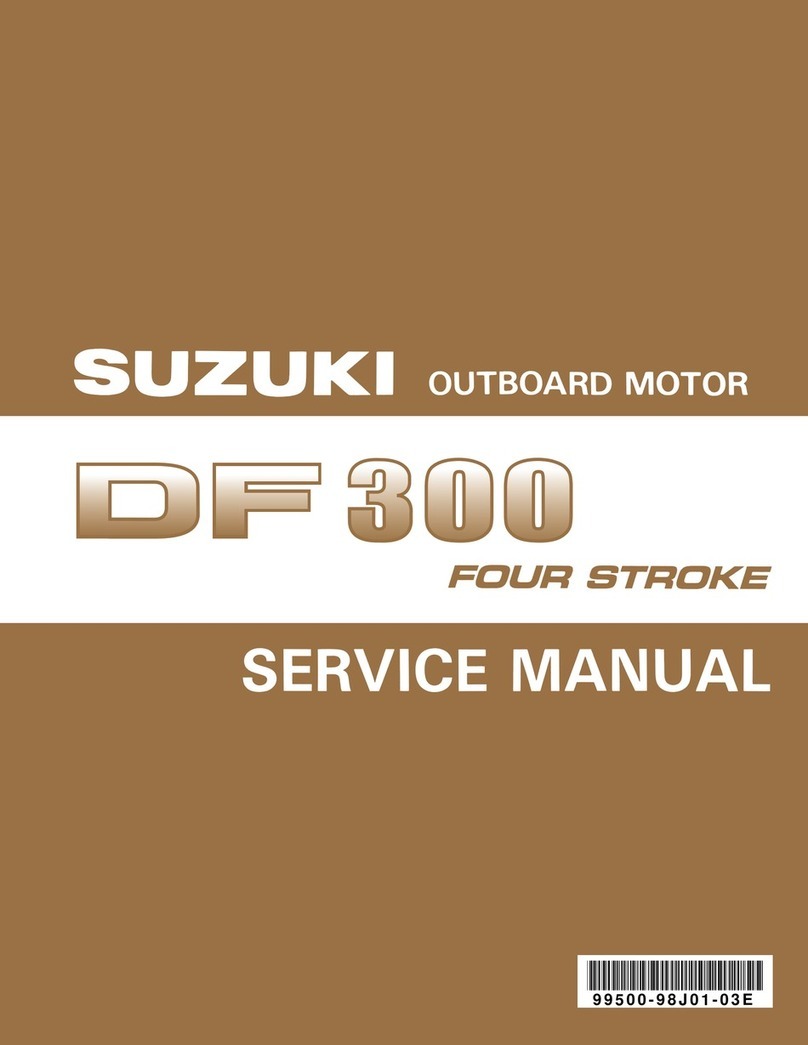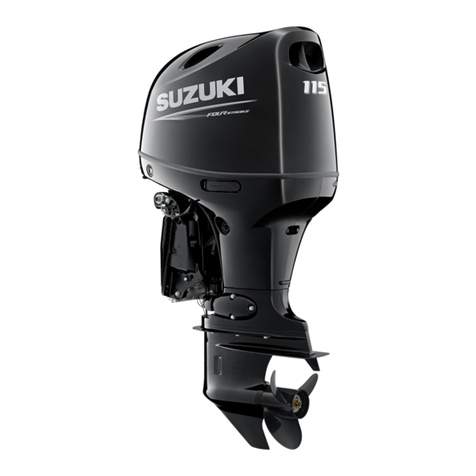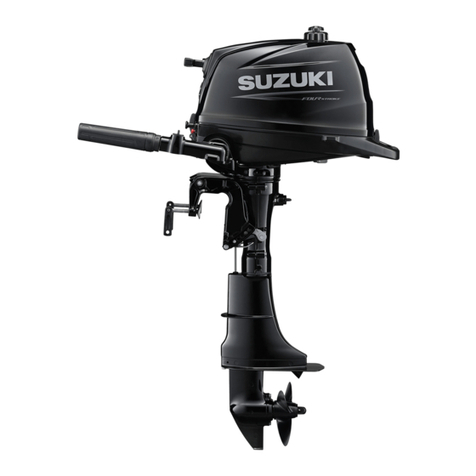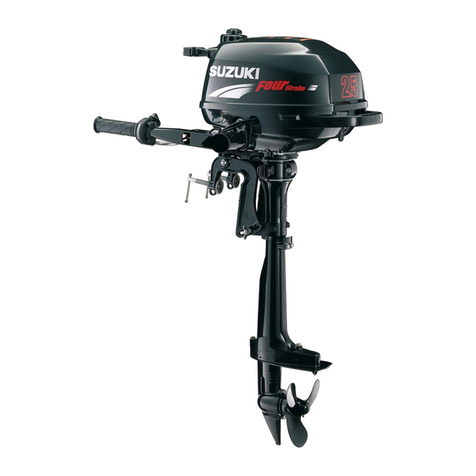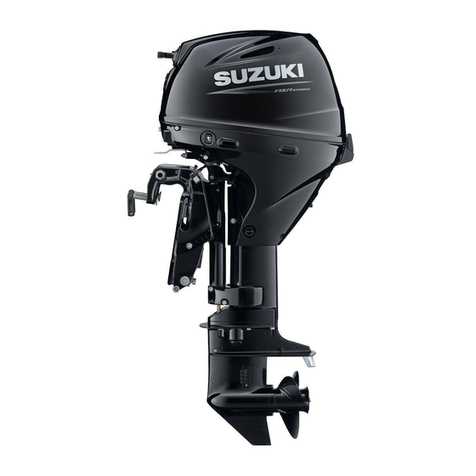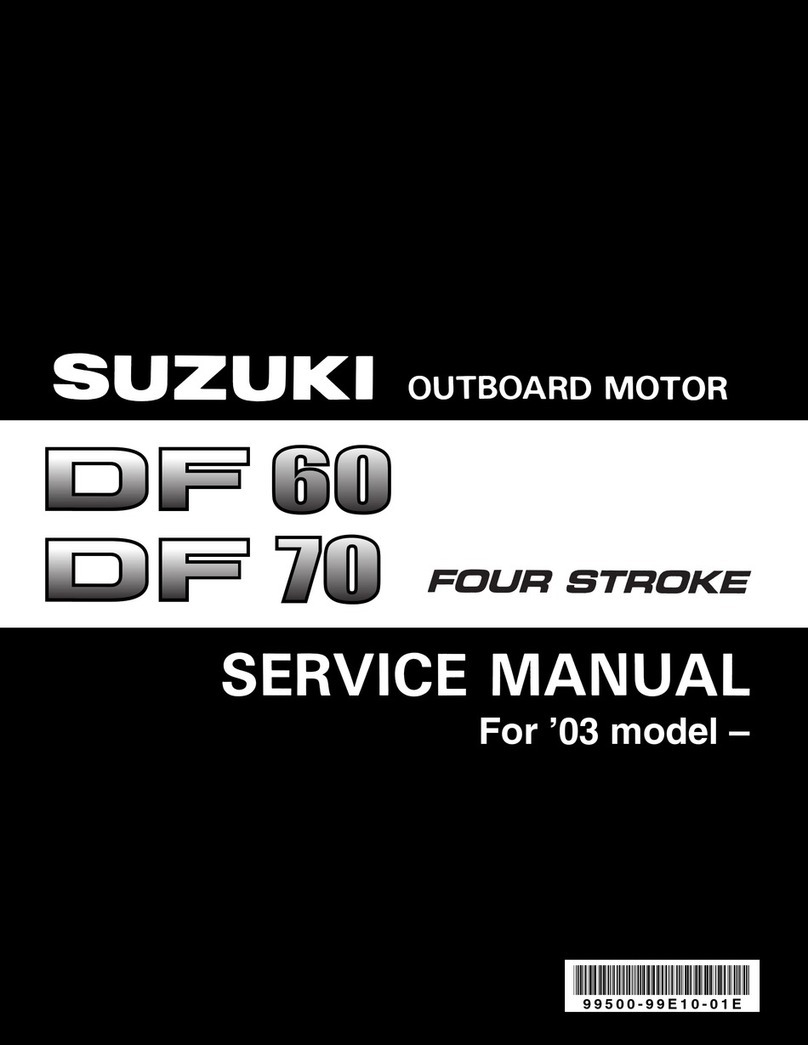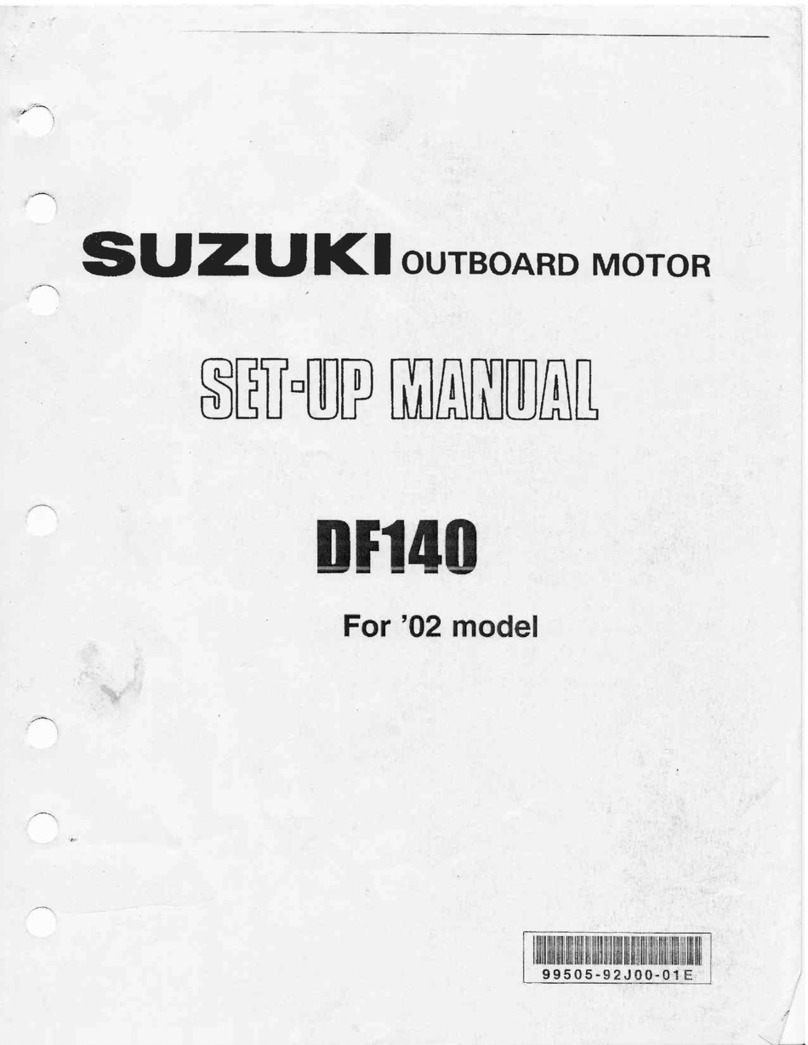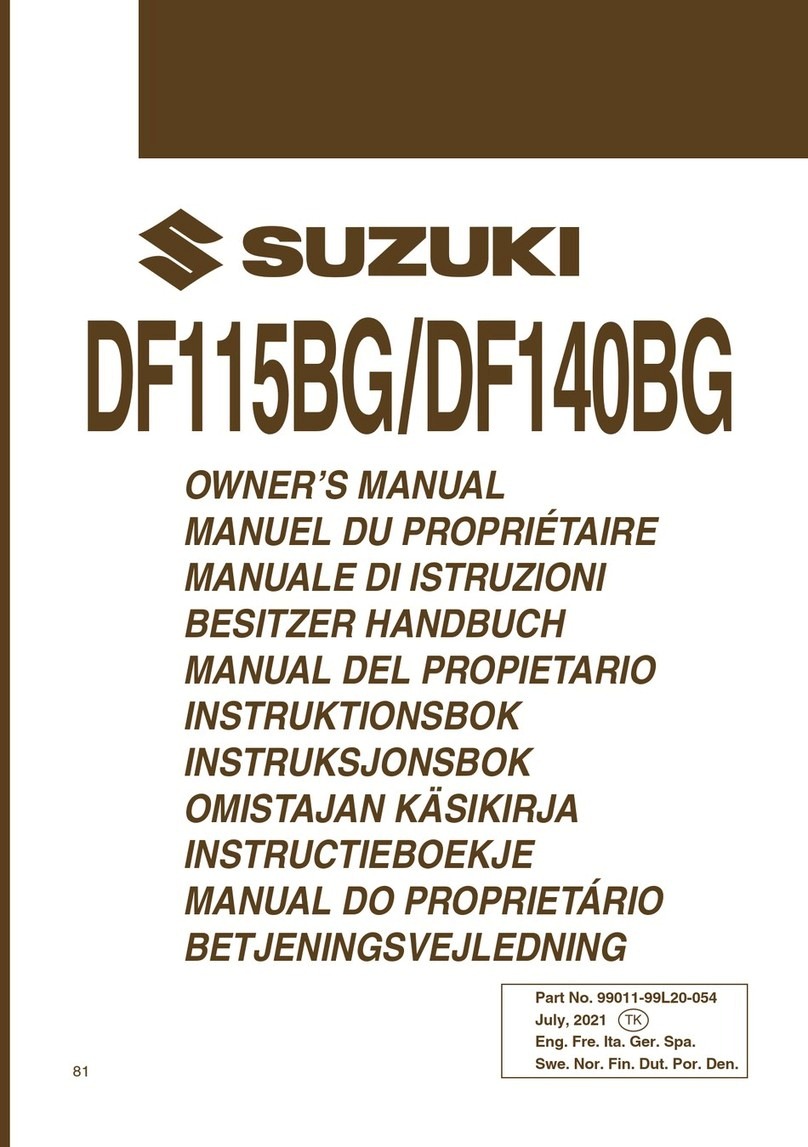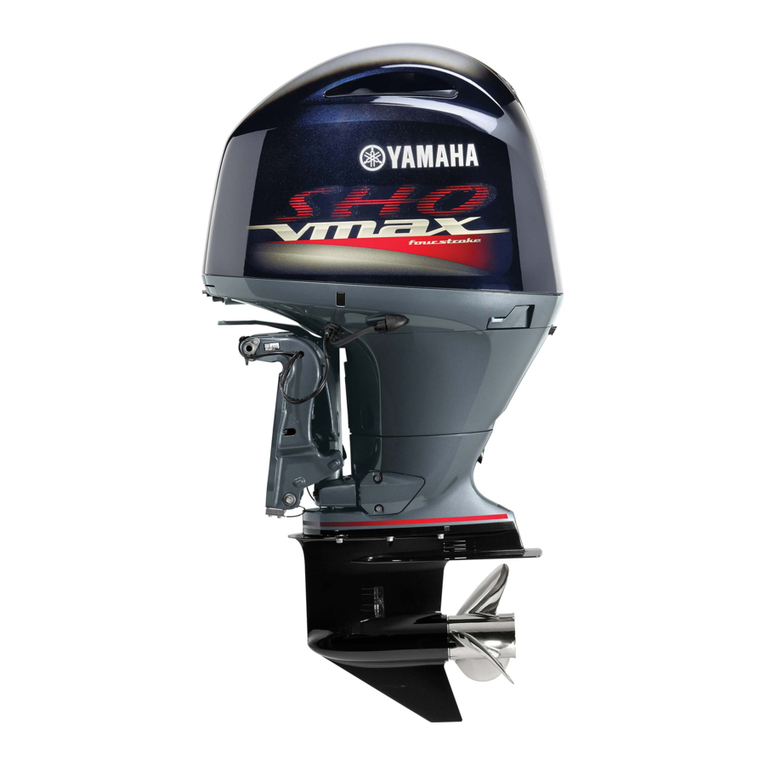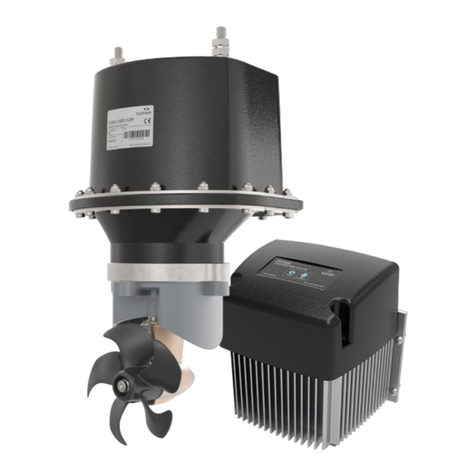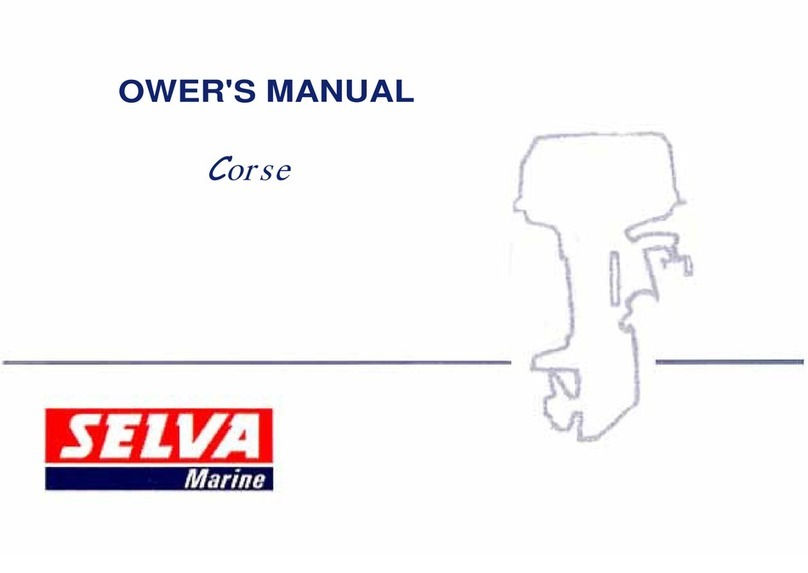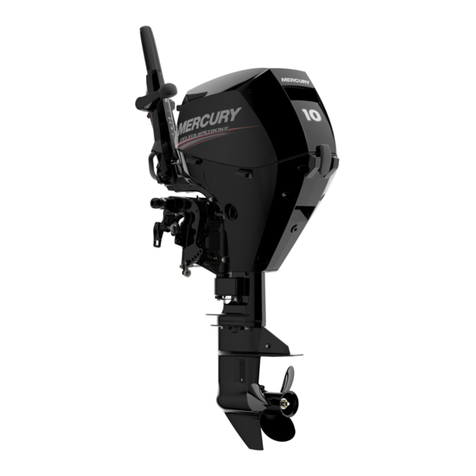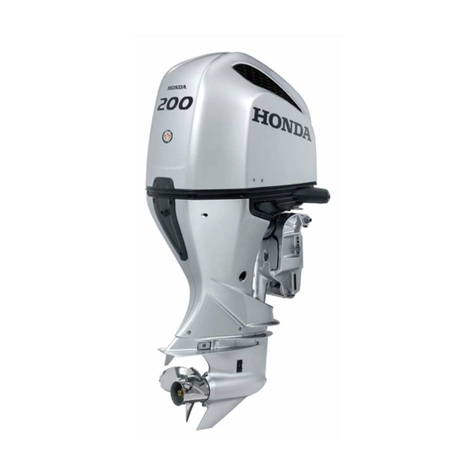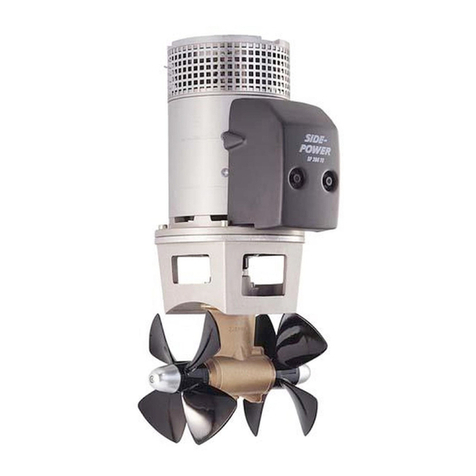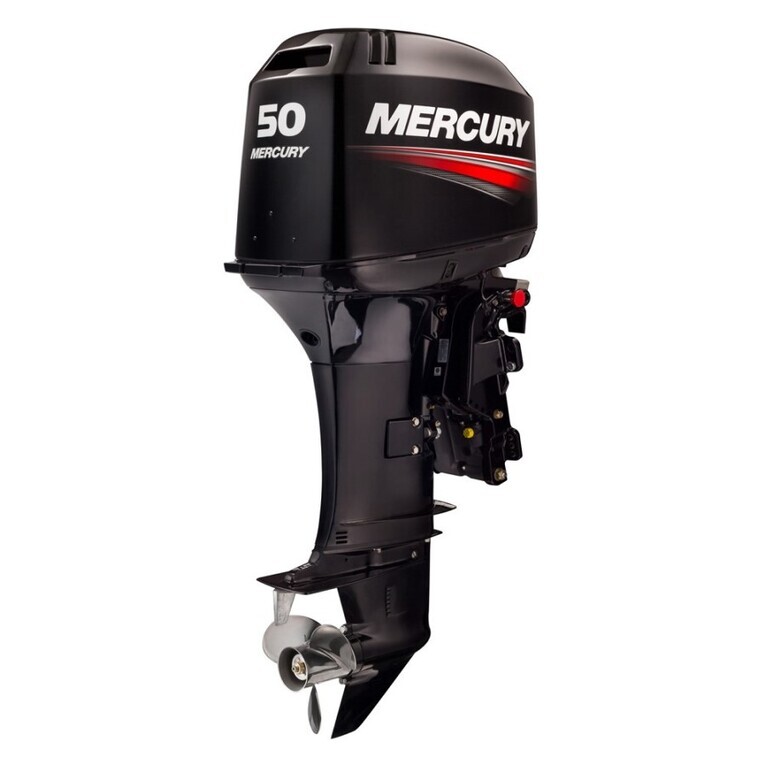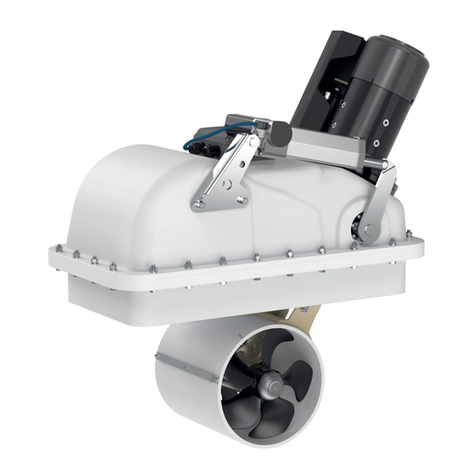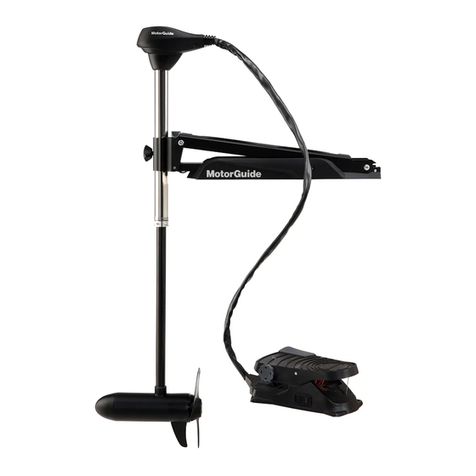2
IMPORTANT
8
WARNING/
8
CAUTION/ NOTICE/
NOTE
Please read this manual and follow its instruc-
tions carefully. To emphasize special informa-
tion, the symbol 8and the words WARNING,
CAUTION, NOTICE and NOTE have special
meanings. Pay special attention to the mes-
sages highlighted by these signal words.
NOTE:
Indicates special information to make mainte-
nance easier or instructions clearer.
This symbol appears in various locations on
your Suzuki product to refer you to important
information in the owner’s manual.
IMPORTANT NOTICE TO
OWNERS
8
WARNING
Indicates a potential hazard that could result
in death or serious injury.
8
CAUTION
I
ndicates a potential hazard that could result
in minor or moderate injury.
NOTICE
Indicates a potential hazard that could result
in damage to the motor or boat.
8
WARNING
Failure to take the proper precautions may
increase the risk of death or severe injury to
you and your passengers.
• Prior to first-time use of your outboard
motor, familiarize yourself thoroughly with
the contents of this owner’s manual. Be
aware of all outboard motor features and all
safety and maintenance requirements.
• Inspect the boat and motor before each trip.
See the INSPECTION BEFORE BOATING
section for important items.
• Become thoroughly familiar with all operat-
ing and handling characteristics of your
boat and motor. Practice at low and moder-
ate speeds until you are competent at han-
dling the boat and motor. Do not attempt to
operate at maximum performance until you
are completely familiar with all of these
characteristics.
• Carry boating safety and emergency equip-
ment. This important equipment includes;
flotation aids for each person (plus one
throwable buoyant cushion in any boat 16
feet or longer), fire extinguisher, sound sig-
naling device, visual distress signals,
anchor, bilge pump, bucket, compass,
emergency starter rope, extra fuel and oil,
first aid kit, flashlight, food and water, mir-
ror, paddles, tool kit, and transistor radio.
Be sure you are carrying the equipment
appropriate for your trip before launching.
• Never start the engine or let it run indoors
or where there is little or no ventilation.
Exhaust gas contains carbon monoxide, a
gas that is colorless and odorless and can
cause death or severe injury.
• Instruct your passengers on how to operate
the boat, how to deal with emergencies, and
how to operate safety and emergency
equipment.
• Do not hold onto the motor cover or any
other parts of your outboard motor while
getting on or off your boat.
• Ensure that everyone wears a PFD (Per-
sonal Flotation Device) on board.
• Never operate the boat while under the
influence of alcohol or other drugs.
• Distribute all weight load evenly in the boat.
• Have all scheduled maintenance performed.
Consult your authorized Suzuki marine
dealer as required.
• Do not modify or remove any outboard
motor standard equipment. To do so may
make the motor unsafe to use.
• Learn and obey all applicable navigation
rules.
• Pay attention to all weather forecasts. Do
not set out if weather is unsettled.
• Use extreme caution when purchasing
replacement parts or accessories. Suzuki
strongly recommends that you use only
genuine Suzuki replacement parts/accesso-
ries or their equivalent. Inappropriate or
poor quality replacement parts or accesso-
ries can create unsafe operating conditions.

